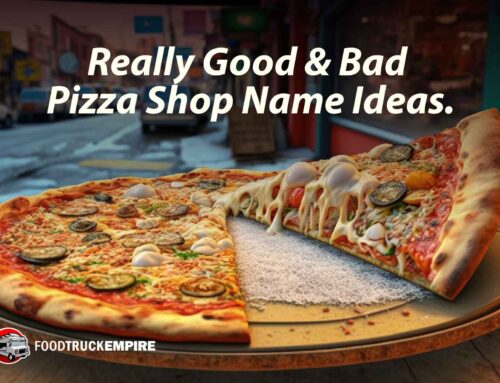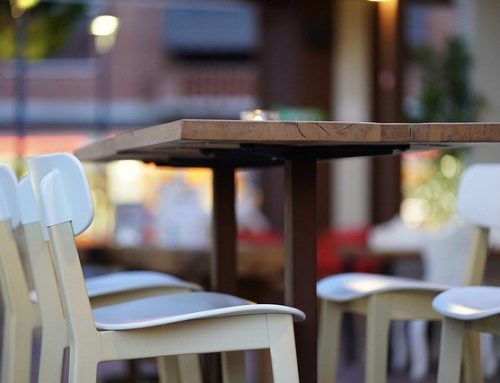When I decided to open a takeout restaurant in my tiny town of just 2,500 year round residents (with a population that swells into the tens of thousands in the summertime), it was important to me to find a way to keep both myself and my relatively small customer base interested and coming back for more, week after week.
One of the ways I’m accomplishing this is with a menu that changes every single week, ensuring repeat visits from customers who know that when hunger hits, they’ll find something new and interesting in my to-go case, any day of the week.
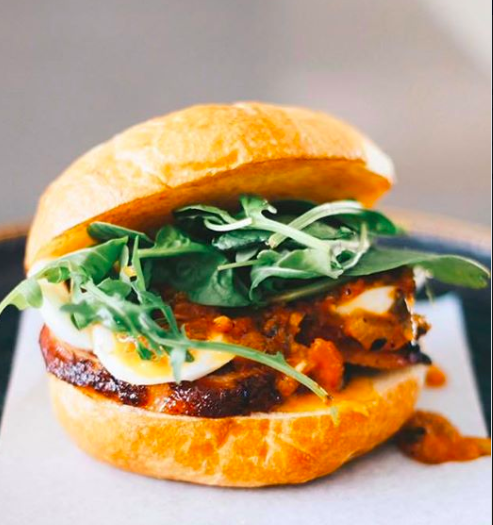
Our ham breakfast sandwich is sometimes on the menu.
This approach has two main benefits. First, as a cook who is usually singlehandedly holding down the responsibilities in the kitchen, a constantly changing menu keeps things fresh and interesting, and keeps my brain engaged day after day; after all, when you make the same hamburger day in, and day out, for months or years at a time, you’re bound to lose interest in putting out the best possible product you can.
But more importantly, now that I’ve established trust in my ability with my loyal customer base, a constantly changing menu means that I can attract the same people, for purchases multiple times per month, since they know there will always be something new, exciting, and delicious available.
Of course, as with any strategy in this crazy, mixed-up business, there have been unexpected pros and cons to this approach. Let’s look at a few of them in greater detail.
Pro: I never burn out or get lazy.
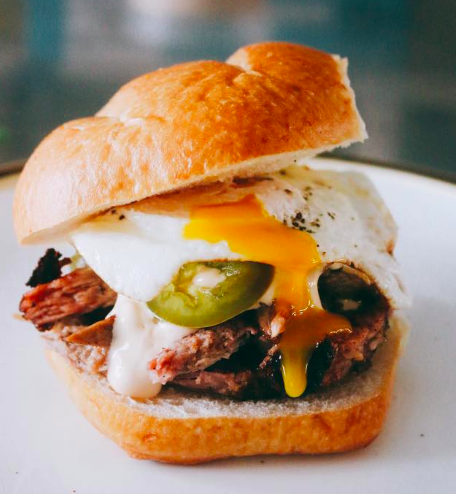
Smoked pork should breakfast sandwich was on our rotating menu last December.
I’ve had a few different roles at a few very different types of establishments during my time in the restaurant business, but one thing seems to have remained consistent: No matter where I’ve been or what I’ve been cooking, some type of burnout is inevitable.
Think about it: Whether you’re making boiled ham sandwiches or foie butter-topped steak frites, the repetition can start to get to you. This can manifest itself in a few ugly ways, none of which are conducive to performing your main job, which is making sure that every plate that arrives in front of your customers is the best it can be. Maybe this means getting lazy. Firing food that is a little closer to its expiration date than it should be. Skipping garnishes. Using bottled sauces. Cutting corners on your plating. Because after all, after this dish is finished, you’re just going to be making another one. And no one will notice anyway, right?
Related Reading: 6 Things that Stress Me Out as a Restaurant Owner
By keeping my menu constantly changing, it encourages me to not just think creatively all of the time, as I’m brainstorming new dishes, but I never get trapped in the robotic execution of those dishes. Because each dish is new, all the time, I need to remain engaged and focused on every element that hits the plate, both to make sure it’s the best it can be, but also just to keep track of what I’m doing. And there’s no mystery, here: An engaged cook who is thinking, makes better food than one who’s just going through the motions.
How do I feed the creativity monster, and keep coming up with new ideas for my menu? The same way home cooks do: A steady diet of food magazines, well-written food blogs, cookbooks, following chefs I admire on social media, and consuming countless hours of questionable Food Network programming.
Con: Customers can’t really recommend a dish to a friend.

Around Thanksgiving, I like adding our Gobbler Sandwich to the seasonal menu.
One of the downsides that I identified early on is that the social recommendation engine that feeds the growth of every restaurant (that is, a satisfied customer telling a friend, who tells two more friends, who each tell two more friends, and so on) gets severely hobbled when you don’t have a signature dish that your satisfied customers can urge their friends and family members to come and try. But the solution to this problem is relatively easy.
At my restaurant, I maintain a menu of “always available” and easy-to-prep and prepare sandwiches that remain consistent from week to week. This allows customers to discover a “favorite” dish that they can recommend to friends and family, secure in the knowledge that it’s always going to be available, even while I’m playing around with the rest of the constantly changing menu.
Related Reading: How I Converted a House into a Fully-Licensed Restaurant
Customers crave new dishes, but they also want to feel some degree of safety and comfort with your offerings; splitting the menu in this way ensures that you’ll reap the benefits of both of these seemingly contradictory urges.
Pro: My restaurant operates with very little waste.
One of the most difficult challenges that any restaurant owner faces, is the problem of waste. Whether it’s being forced to throw away prepped food that’s sat around too long, or throwing rotten cases of produce in the dumpster, one thing is certain: If it’s not making you money, it’s costing you money.
An ever-changing menu helps minimize the waste problem, because you tend to only buy the ingredients you need, in the quantities you need them, for a given dish. And with the takeout format of my business, prepped meals never go to waste; anything that doesn’t sell during the week, gets tossed into the freezer for sale to customers who stock their freezers from our “frozen specialties” menu.
Con: Ordering inventory can be difficult and constant.

What should I put on the menu next?
As my business grows, this one is turning into more and more of a struggle. In most restaurants with fixed menus, the process of ordering more product is pretty straightforward. You have a list of the items you need to build all of the dishes on your menu, and you order them in large quantities, to ensure you never run out. This presents not just convenience, but a real cost savings, since it’s always less expensive to buy a case of milk, versus a gallon of milk.
Because my menu is always changing, I can’t really order this way. Instead, I’m placing food orders weekly, for whatever I need for the coming week. There are some staple ingredients that I can buy in big quantities, like sugar or romaine lettuce. But for the most part, I’m buying the things I need as I need them, which can be stressful, more expensive than buying in bulk, and prone to mistakes.
I can’t tell you how many last-minute runs to the supermarket I’ve made for an element of my dish that I’ve forgotten, like Italian parsley or Greek yogurt. These runs are not only costly; they’re time-consuming and stressful, as well.
Pro: I can adapt my menu to local competing events, to the seasons (or even to the weather).
Because my menu is constantly changing, I can adapt not just to the overall seasons, but to specific weather events. Is snow in the forecast? It’s probably a good week to run something hearty, like macaroni and cheese or beef stew. A sweltering hot day probably means pasta salads or fresh tossed salads.
Oh, is it November? Let’s roll out a few classic Thanksgiving dishes, or a few classic backyard barbecue side dishes for grilling season. Is the community church hosting a huge potluck, or a competing restaurant offering dollar oysters on a certain night of the week? Better scale back our quantities; since we probably won’t be super busy that night.
This ability to adapt with your environment not only ensures you’re getting your customers the dishes they crave, when they want them, but also lends a sense of timeliness and community engagement to your business.
Con: When customers find a favorite, they usually can’t get it again for a while.
If you decide to keep your menu constantly changing, you’re going to get the same question over and over again: “When are you going to make that shepard’s pie/chicken tikka masala/brown butter tilapia again?” While many customers love to find a favorite that they can return to again and again, be patient, and keep making consistently great food.
Sooner or later, your regulars will learn to trust you, secure in the knowledge that WHATEVER you’re serving that week, is bound to be good. And once you’ve established that, you’re home free to keep changing things as often as you’d like, returning to your best-selling dishes occasionally when you’re in a creative slump.
Pro: A constantly changing menu encourages repeat visits.
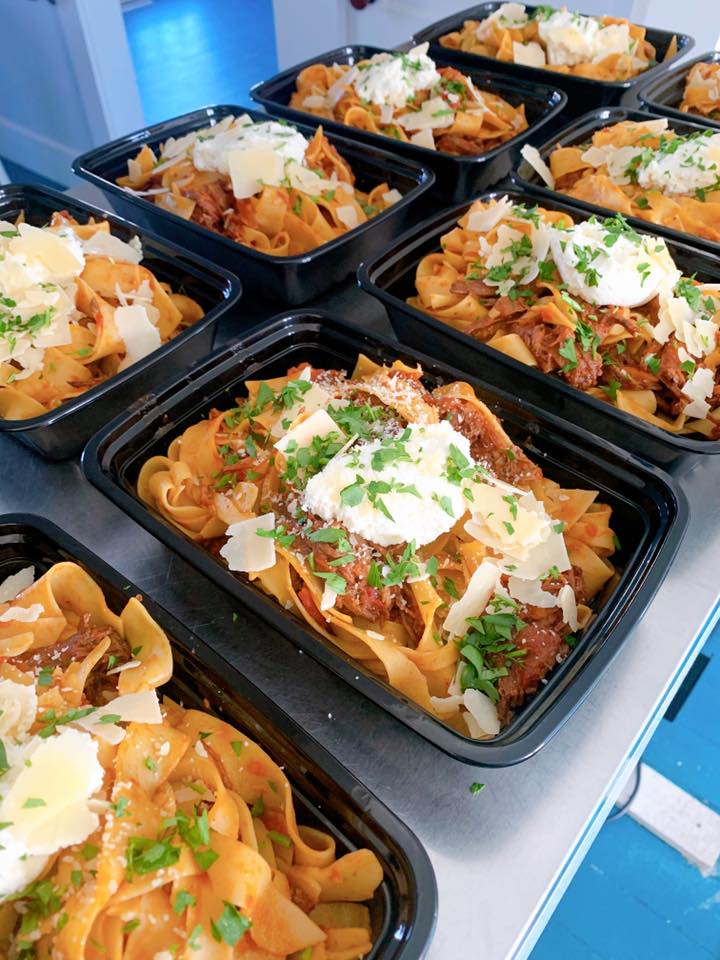
At many of my favorite restaurants, there’s one dish that I get, over and over again. I can’t NOT order the Massaman chicken curry at my favorite Thai place, I always get the dumplings at my favorite Chinese place, and when I want a great burger, I know just where I’m going to go to get it.
The downside, at least from the restaurant’s perspective, is that I tend to only crave THAT ONE THING I LIKE FROM THE PLACE I LOVE, I dunno, once every couple of months. After all, there’s only so many orders of curry you feel like eating in a month. But with a menu that’s always changing, my customers are encouraged to “double dip” with multiple repeat visits to my restaurant in a given month, or even within the same week. They know that there will always be something new to try, and they pick my restaurant because they like ALL of my food, not just one particular dish that they only want to eat once in a while.
Con: Customers kind of want print menus.
Nobody cares about print menus, right? In this online world, don’t restaurant menus get relegated to the back of the junk drawer, crumpled up and never to be seen again?
That’s what I thought, until I started fielding daily requests for a print menu that customers could take with them, or pass along to a friend. It turns out, many customers still want to leave your restaurant with a print menu that they can hold in their hands, peruse, and consult when the mood hits.
I think the solution for this one is fairly simple; we printed simple business cards with our logo, a link to our menu online, and a one-sentence explanation that our menu is constantly changing. In the future, we may consider doing a print menu that features the “always available” side of our menu, with a note that there are additional weekly specials always available (and maybe even a section that reads, “Typical Selections Include…” with a few example dishes).
The final word.
Does an ever-changing menu make sense for your business? The answer depends on the size of the population you’re serving, the quantities of food you’re producing, and your tolerance for a certain amount of flying by the seat of your pants.
While the inconveniences presented by more complicated inventory purchases and challenges with promotion are there, your customers may appreciate the range of exciting new options that an ever-changing menu provides. Ultimately, it’s going to come down to your customers, and the kind of food business you want to build.
In the process of starting your own restaurant? Learn how I opened a restaurant with no money and a 540 credit score.

